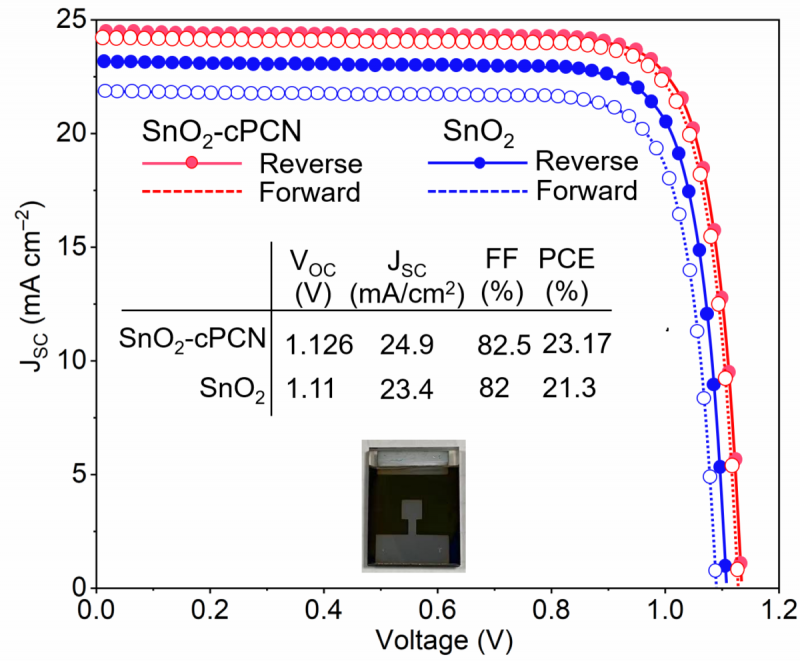Researchers from the Chinese Academy of Sciences and Fuzhou University have fabricated a perovskite solar cell with an electron transport layer (ETL) based on Tin(IV) oxide (SnO2) and crystalline polymeric carbon nitrides (cPCN).

They explained that the modification of the SnO2 layer with the cPCN is key to avoiding undesirable current-voltage hysteresis, which is responsible for reducing the cell's stability. This phenomenon occurs in electrical systems when current or voltage changes and the effects of the changes are delayed. It is strictly dependent on the composition of the material, and ion migration and non-radiative recombination near interfaces are generally considered responsible for the effect.
These issues are commonly solved by applying dopants or additives to the SnO2 layer. The cPCN, according to the scientists, allowed for the development of an ETL with superior electron mobility, which they defined as more than three times higher than that of a simple SnO2 layer. “The perovskite solar cells based on SnO2-cPCN exhibited negligible current density-voltage (J-V) hysteresis due to the decreased charge accumulation at the perovskite/ETL interface under the increased electron mobility,” they explained. “Besides, the SnO2-cPCN surface became smoother and less wettable. On this basis, the perovskite absorber layers with reduced grain boundaries and enhanced qualities were realized due to suppressed heterogeneous nucleation of [the] perovskite.”
This ETL configuration also avoided the growth of perovskite grains, which resulted in a reduction of non-radiative recombination.
The cell achieved a power conversion efficiency of 23.17% on devices with a small active area of 0.1cm2. The device also showed a short-circuit current of 24.9 mA cm−2, an open-circuit voltage of 1.126 V, and a fill factor of 82.5%. The Chinese group was also able to obtain a 20.3% efficiency on a device with a large active area of 1 cm2. This cell exhibited a short-circuit current of 23.4 mA cm−2, an open-circuit voltage of 1.11 V, and a fill factor of 82%.
“This work provides a promising direction for developing high-quality ETLs and verifies the enormous potential of large scale deployment of perovskite photovoltaics,” the academics concluded.
The solar cell is described in the paper cPCN-Regulated SnO2 Composites Enables Perovskite Solar Cell with Efficiency Beyond 23%, published in Nano-Micro Letters.